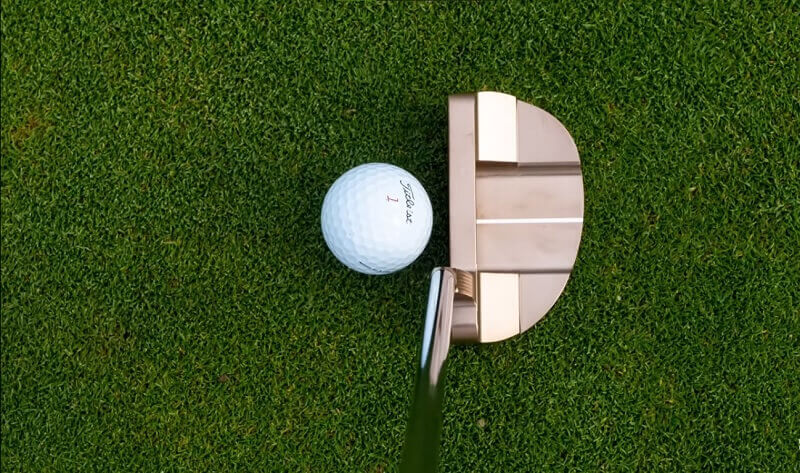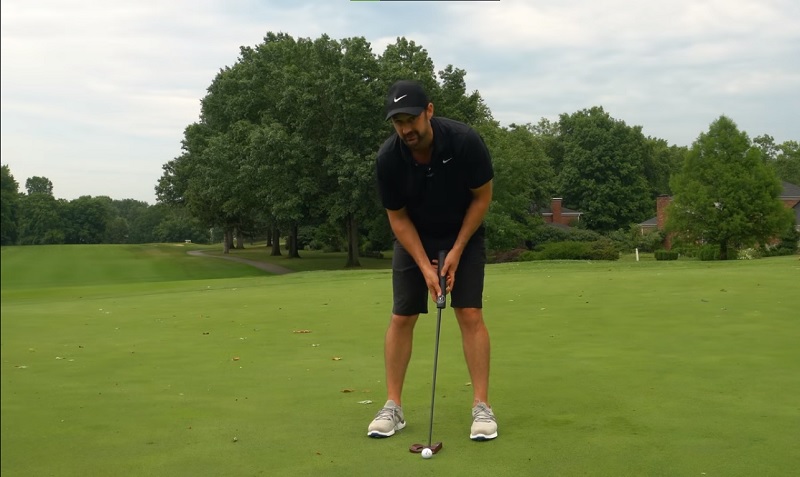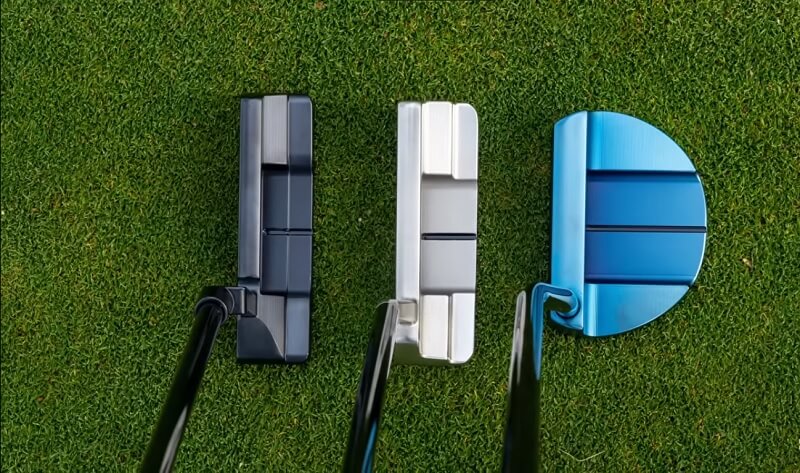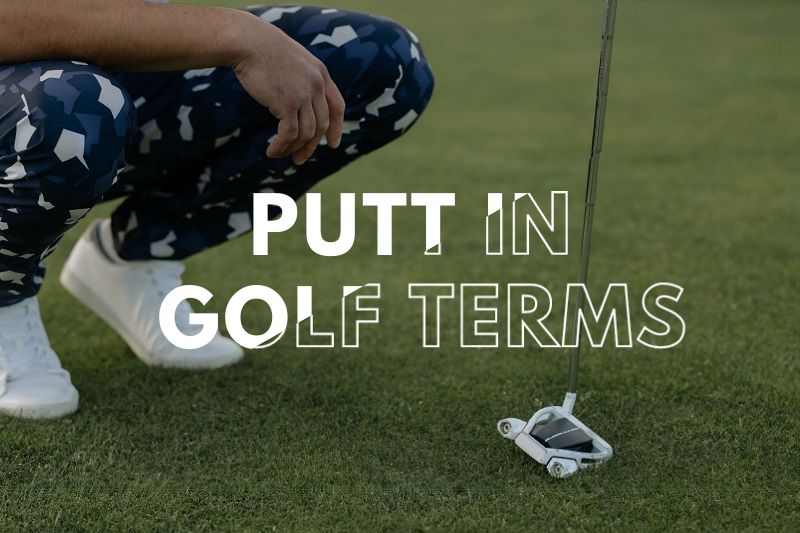In the beginning days of learning golf, you often catch up with many slangs and terminologies that are hard to understand.
To enhance your golf skill, you need to update and learn not only the golf skill, golf technologies, and golf equipment but also know these golf terminologies to communicate with your golf friends and your coaches and facilitate basic knowledge to approach more about golf.
Putt is one of the most important terms you need to know before you practice golf. This article will explain what a putt is in golf terms, how to properly line up your putt, different types of putts, and common mistakes made when putting to cover all of the basic information about putts in an easy way for beginners.
What Is A Putt In Golf Terms?
In golf, a putt is a type of shot in which the ball travels along the green on its way to the hole. Putts are typically used for short-distance shots and require the golfer to aim carefully to get the ball into the cup.
In other words, Putt is a short, low-speed shot taken with a putter on the putting green. Whether you are on a golf course or using a golf putting mat for practice, the goal of the putt is to roll the ball into the hole in as few strokes as possible.
So, what is a Putter in golf?
A putter is a type of golf club specially designed for making putts. It has a shorter shaft than the other clubs, which makes it easier to control when putting.
The putt is an essential part of golf; mastering this skill can make a difference between winning and losing a game. The ability to putt effectively can save strokes and give golfers an advantage over the competition.

To successfully putt, golfers must develop their distance control and accuracy skills.
Distance control is important because if a player hits the ball too far, they will have an increased chance of missing the hole.
Accuracy is also important, as it helps players determine the appropriate amount of power needed to get it in the hole. With practice, golfers can develop their putting skills and use them to their advantage on the golf course.
So, you know about What is a Putt in Golf Terms, then, how to do it, when to do and other things around Putt are waiting for you after this part. Let’s dive right in!
Basics of Putting
When do we Putt in Golf?
When playing golf, players typically use their putters on the green. The player will line up the shot and then take a few practice swings to get comfortable with their putting stroke before taking the actual shot.
For most shots, there should be enough room to make it to the hole without hitting any obstacles in the way. If there are obstacles that need to be removed before taking the shot, such as trees, then the player will use their sand wedges to do so.
So, when your ball is on the green, near the hole in the distance that is suitable for using a putter, it’s when you should put the ball.
How Do We Putt In Golf?

First, you should know how to hold the putter in the right way. Here are the basics of holding a putter:
Grip the putter with your dominant hand and make sure that your thumb is pointing down.
Ensure that you don’t hold the putter with your fingers and put pressure on it. Instead of that, hold your putter with your palm.
Place your other hand slightly lower on the grip in order to support it.
Your arms should be relaxed and slightly bent at the elbows for comfort while putting.
Then, setting up your posture when putting is much different than other postures. You should stand with feet shoulder-width apart and posture tall, rotate your hips back a bit and let your arms hang in a relaxed manner.
Finally, practice the stroke motion to get more confident with the putter. Move the putter back and forth in order to get familiar with its feel. When you take the shot, make sure that you keep your eyes on the ball until you make contact with it.
When swinging the putter, you should make a pendulum motion, meaning that the stroke should be continuous and not jerky. The power of the shot will come from shoulder movement instead of arm strength.
And the notable thing is you shouldn’t make a long rotation in the backswing or downswing. It means the distance from the highest point on the ball rotation to the ball when it is in the back and downswing is almost the same.
Also, ensure that you keep your head still throughout the swing and do not move it when hitting the ball.
Make sure that your eyes line to the ball vertically and create a perpendicular line to the ground.
Different Types of Putter Clubs

Blade Putter
Blade putters are renowned for their timeless design, revered for exceptional precision, and revered for their unwavering consistency on the greens.
With a compact alignment aid, these putters are particularly favored by players who employ an arc-style putting stroke.
Additionally, blade putters offer effortless adjustability, allowing players to easily and precisely rotate the putter head to achieve the desired open, closed, or squared-up position.
In the world of golf, blade putters are a favored choice for those seeking reliability and finesse on the greens.
Mallet Putter
Mallet putters in golf are widely recognized for their unique design, featuring a semi-circle shape and a club path that follows a straight back and straight-through motion.
These putters offer excellent performance and customization capabilities with their face-balanced design. They are particularly renowned for their ability to enhance distance control on the greens.
Another advantage of mallet putters is the inclusion of a longer alignment aid, which provides added assistance in aiming.
Modern Mallet Putter
Modern mallet putters in golf rely on several key features to enhance performance. These putters typically have a large head, which helps to stabilize the putter head at impact.
Additionally, the use of different materials and strategic weight distribution allow engineers to effectively push the center of mass further back in the putter head. This design helps golfers achieve greater stability and improved accuracy on the greens.
Common Mistakes Made When Putting
One of the most common mistakes made when putting is allowing too much motion in the backswing and downswing. This can lead to a less consistent stroke and poor distance control.
Another common mistake is not keeping your head still throughout the entire swing. Even a subtle movement of the head can significantly affect your aim and accuracy.
Additionally, an improper alignment of the putter can lead to a crooked path and off-the-mark shots. Make sure to establish a straight line between your ball and the hole before taking any shot.
Finally, golfers should avoid gripping their putters too tightly. This will cause tension in your arms and make it difficult to get a good feel for the stroke.
Other Terminology for Beginners
Golf is full of different terminology that can be confusing for beginners. Here are some of the most common terms used when playing golf:
- Tee Box: A raised area in which a player should place their ball before hitting it.
- Fairway: The grassy area between the tee box and green, where players attempt to hit their balls.
- Rough: The area surrounding the fairway, where grass is much longer and can make it difficult to play.
- Bunker: A sand trap or depression that lies alongside a fairway or green, requiring a special technique for getting the ball out.
- Green: The area of mowed grass on which the hole is located.
- Driver: A large-headed club designed to hit the ball distances of more than 200 yards.
- Iron: Clubs ranging from 1 to 9, used for hitting the ball shorter distances.
- Wedges: Specialized clubs with angled faces, which are used for cutting spin and getting the ball onto the green.
- Birdie: A score of one stroke below par.
- Divot: A chunk of grass and soil that gets displaced when a player hits the ball.
- Drive: The first shot of a hole, hit from the tee box.
- Lie: The position of the ball relative to the ground.
- Loft: The angle of the clubface relative to the ground.
FAQs
Why Do They Call It A Putt?
The term “putt” comes from the word “putter,” which is what golfers use to hit the ball on the green. The putter was originally designed with a flat face, making it easier to roll the ball than hit it in the air like with other clubs. This led to it becoming known as a putter and then, eventually, just a “putt.”
Do You Look At The Ball When You Put It?
It is important to look at the ball when making a putt, as this will give you an idea of how it will roll. This is especially true for long putts requiring more precision and accuracy. It’s also important to line up your feet and body with the hole in order to hit a straight shot.
Final Thoughts
Putting can be a daunting task for beginners, but with the right knowledge and practice, it is possible to become a great putter. Always remember to keep your eyes on the ball, line up your shot correctly, select the appropriate type of putter for your game, and avoid any common mistakes. With these tips in mind, you’ll be sinking more putts in no time!


